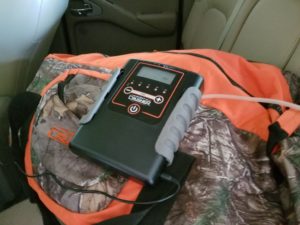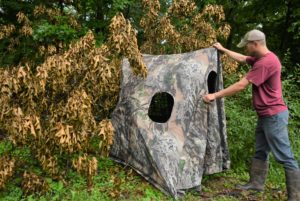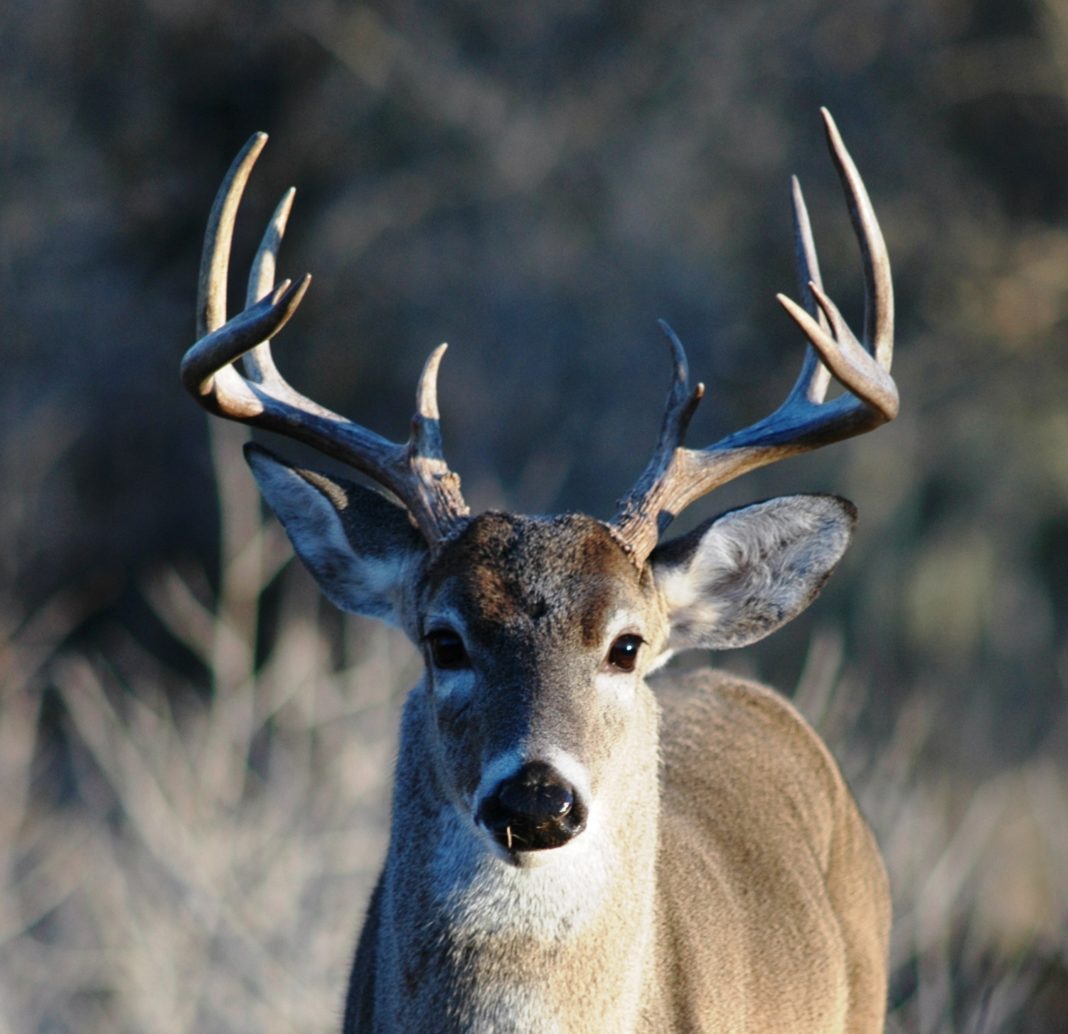Ground blinds and shooting houses are becoming more and more popular as a whitetail deer tactic… and no wonder. A fall from a tree stand can kill you and it’s one of hunting’s most frequent accidents. You can hunt a ground blind in the worst weather and remain comfortable and concealed. Finally, deer and turkeys rarely see you because you are 99 percent concealed and you can move your hands, feet, and even use your cell phone without spooking game.
However, ground blinds aren’t magic potions that lure giant bucks from fields afar. They are a tactic, a strategy like a tree stand, and simple mistakes can turn an otherwise magic experience into a lonely sit in the woods. Here are five blunders that can ruin any ground blind set-up.
Stark Silhouette
Wild turkeys are clueless about a ground blind silhouette, yet most whitetail deer will spook at the domed image that suddenly appeared in their living space. Although most of today’s ground blinds are highly portable, it’s best to set them up well ahead of hunting and “brush them in” with local vegetation so that the silhouette is disguised. Make your blind look like a fallen tree and deer won’t spook.
Human Scent

Ground blinds can help to contain human scent, yet you can’t hunt upwind of a good ambush spot and succeed. First, consider that the blind has scent. Best to set it up outside for a week or so before deploying. Secondly, take the same scent precautions you would with any deer hunting scenario- shower, spray down, keep as scent free as possible. Finally, don’t forget your gear. Most things that you bring into your blind have human scent, so spray them as well.
Go Solo
Most savvy deer hunters use more than one stand. Hunters who use climbing tree stands have the benefit of added mobility yet must still deal with all the challenges of hunting high in a tree. The trick for ground blind users is to have more than one and it’s OK to have two blinds that watch a single ambush spot. If you know of a hot rub or scrape line, put two blinds up to take advantage of the wind and sunlight conditions.
The Dark Side
Common sense may suggest that the best ground blind allows vision in all directions which translates to keeping all shooting windows open. Not so. As part of the brush-in process, back your blind up to heavy cover so that you don’t have to worry about being seen from behind.

Deer that pass in front of your blind will offer the best shooting angles and you don’t have to constantly be turning your head like an owl. If you can shoot 180 degrees, you can take a deer either coming toward or from behind your location. By minimizing your shooting windows, you keep your blind darker inside allowing you to draw a bow or raise a rifle without being seen. With ground blinds, darkness is your friend. Try to set up your blind facing north or south so that the rising or setting sun does not shine directly into it.
Shoot the Blind
This may sound like a no-brainer, yet it happens far more often than you think. When that big buck suddenly shows up in front of your blind, it’s perfectly natural to slowly raise your bow or rifle and shoot as soon as the sight settles on its vitals. However, with a crossbow, compound, or center-fire there’s about a 3-inch difference between the line of fire and line of sight.
Always practice aiming from every shooting portal so that you avoid this problem. Hunting from a “hide” is tremendously exciting because you are so close to game and at the animal’s level. It’s a good idea to sight-practice on squirrels, rocks, and stumps so that you know the range and turn a potential blunder into a bountiful shot.









![The Best Deer Camp Chili [VIDEO] Deer Chili Ingredients, Tomatoes, Chili Spices](/wp-content/uploads/2015/10/Deer-Chili-Deer-Camp-Recipe-218x150.jpg)








![How to Call Elk Early in the Season [VIDEO]](/wp-content/uploads/2016/08/byers003-218x150.jpg)




![Idiots Disturb Hunter: How Would You Have Handled It? [VIDEO]](/wp-content/uploads/2015/10/DSC00110-e1474487693878-100x70.jpg)
![Albino Buck Shocked to Shed His Antlers [VIDEO]](/wp-content/uploads/2015/10/AlbinoDeer-100x70.jpg)